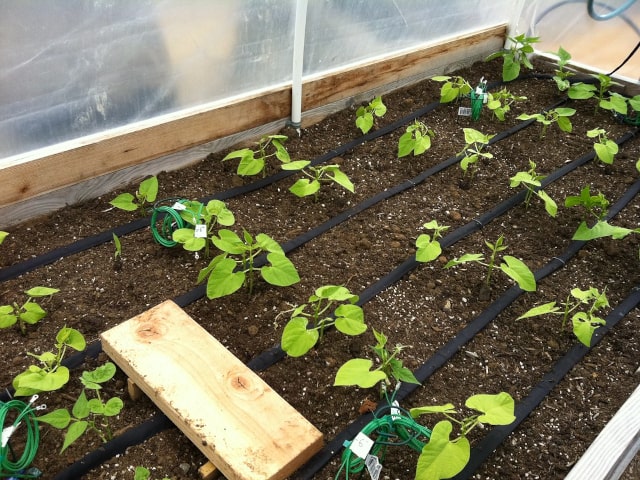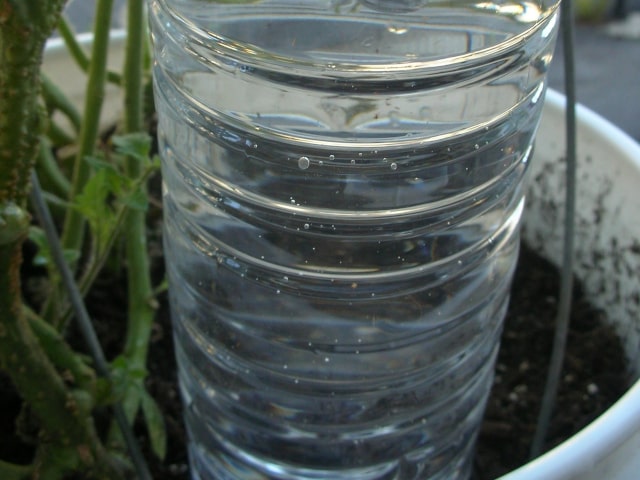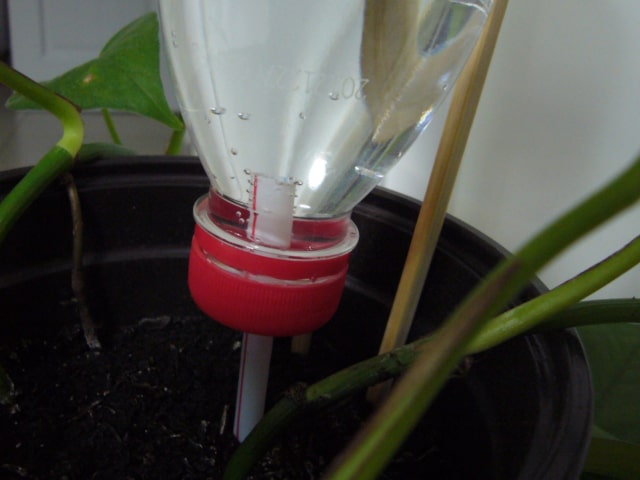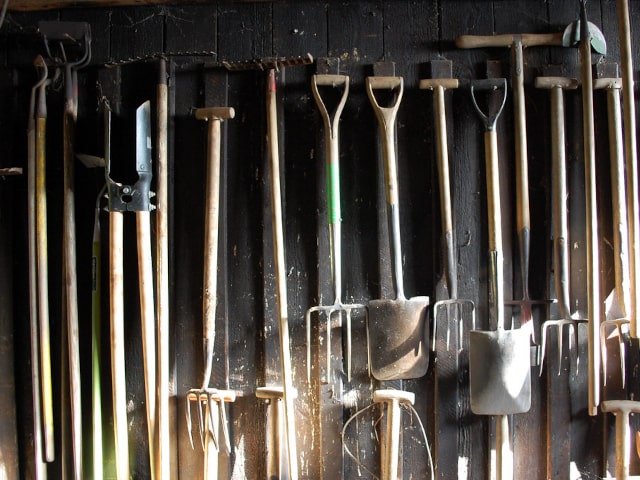
Drip irrigation (also known as micro irrigation) uses a network of pipes made to carry a low water flow (under low pressure) to plants. The water is delivered through tube openings or attached devices usually placed above, at or below the soil surface. In this technology, the water is applied more slowly than with sprinkler irrigation. This is a very effective irrigation method and it's very suitable for holidays when you're not at home and you need your plants watered regularly.
Drip Irrigation: The Advantages
Drip irrigation offers some important advantages:
- Water distribution can easily be controlled. It's highly uniform and adjusted to the optimal level.
- Localized application and reduced leaching minimize nutrient and fertilizer loss.
- When it comes to frequency of irrigation, the soil type plays less important role, which gives plant growers more freedom.
- It's easy to maintain moisture with the root zone.
- High water application efficiency.
- Narrow and odd-shaped areas are easily irrigated with the use of drip systems.
- Drip irrigation saves water and it's ideal for areas in which water restrictions are imposed.
- It's easy to setup an automated irrigation system in case you're not at home when the plants need watering.
Drip irrigation technology is readily available and adjusted to home systems. It's even possible to make your own, homemade drip irrigation system if you're crafty enough. Commercial drip systems are easily managed with an AC or battery controller. Automated irrigation is ideal for busy people or holiday season.
Devices and Emitters
Dispensing devices are called emitters. Drip irrigation uses emitters attached to a mainline to deliver water directly to plants. There are 2 main types of emitters: pressure sensitive and pressure compensating.
- Pressure sensitive emitters provide a higher water flow and higher water pressure.
- Pressure compensating emitters (more common these days) give the same water flow over a wide pressure range.
Emitters are either directly attached to the mainline providing the water or placed on the ends of micro-tubes. Emitter tubing is particularly useful for closely spaced plants. It's worth noting that emitters are generally color-coded by flow rates.
The emitters should be placed in such a way that the water can easily reach the roots of the plants. All drip systems need to be designed and installed based on the needs of the specific plants. New plantings require emitters to be placed over the root ball. In many cases, the initial placement of the emitters is permanent, unless the plant has a significant growth. For example, trees require emitters to be moved away from the trunk as the plant grows.
The number of emitters is also important. It will depend on how much water a specific plant needs. Lower water-using plants or those that receive only occasional water will require fewer emitters.
The placement of emitters also depends on the type of soil. For example, sandy soils require more emitters in order to effectively water the soil area.
It's important for the emitters to be properly placed. If they are too far apart of too few in number, the plants may not receive enough water. It's also vital that you perform regular maintenance to ensure the system is working properly.
Installing and Operating a Drip System
It's generally easy to install a drip system because the mainline doesn't have to be trenched into the ground. There are many choices when it comes to the point of connection to a water supply. It can be a pump from a well or a pond, faucet or even a high pressure sprinkler head equipped with a special kit to convert it to drip.
Drip irrigation systems are designed to operate for about one hour of run time per week. Watering twice per week may be required in some cases, for example, after planting on sandy soils or for plants requiring regularly moist soil. More water is required during summer than in cooler months.
Sometimes, plant growers overwater their plants via drip systems, especially if they use manual operation. For this reason, it's good to use a controller.
Photo credit: Gail Langellotto




0 Comments